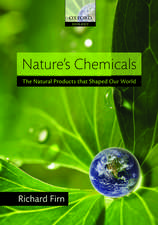Elastic Filaments of the Cell: Advances in Experimental Medicine and Biology, cartea 481
Editat de H.L. Granzier, Gerald H. Pollacken Limba Engleză Paperback – noi 2012
Din seria Advances in Experimental Medicine and Biology
- 9%
 Preț: 719.60 lei
Preț: 719.60 lei - 20%
 Preț: 691.93 lei
Preț: 691.93 lei - 5%
 Preț: 717.00 lei
Preț: 717.00 lei - 5%
 Preț: 716.28 lei
Preț: 716.28 lei - 5%
 Preț: 717.20 lei
Preț: 717.20 lei - 15%
 Preț: 640.24 lei
Preț: 640.24 lei - 5%
 Preț: 1113.83 lei
Preț: 1113.83 lei - 5%
 Preț: 715.71 lei
Preț: 715.71 lei - 5%
 Preț: 820.43 lei
Preț: 820.43 lei - 15%
 Preț: 641.38 lei
Preț: 641.38 lei - 5%
 Preț: 716.28 lei
Preț: 716.28 lei - 5%
 Preț: 523.99 lei
Preț: 523.99 lei - 5%
 Preț: 1031.00 lei
Preț: 1031.00 lei - 5%
 Preț: 717.00 lei
Preț: 717.00 lei - 5%
 Preț: 715.35 lei
Preț: 715.35 lei - 20%
 Preț: 1161.71 lei
Preț: 1161.71 lei - 5%
 Preț: 1170.51 lei
Preț: 1170.51 lei - 18%
 Preț: 1119.87 lei
Preț: 1119.87 lei - 5%
 Preț: 1288.48 lei
Preț: 1288.48 lei - 5%
 Preț: 1164.67 lei
Preț: 1164.67 lei - 5%
 Preț: 1101.73 lei
Preț: 1101.73 lei - 18%
 Preț: 1123.67 lei
Preț: 1123.67 lei - 5%
 Preț: 1435.64 lei
Preț: 1435.64 lei - 20%
 Preț: 1044.10 lei
Preț: 1044.10 lei - 18%
 Preț: 946.39 lei
Preț: 946.39 lei - 5%
 Preț: 292.57 lei
Preț: 292.57 lei - 18%
 Preț: 957.62 lei
Preț: 957.62 lei - 18%
 Preț: 1235.76 lei
Preț: 1235.76 lei - 5%
 Preț: 1231.55 lei
Preț: 1231.55 lei - 5%
 Preț: 1292.30 lei
Preț: 1292.30 lei - 5%
 Preț: 1102.10 lei
Preț: 1102.10 lei - 18%
 Preț: 1132.81 lei
Preț: 1132.81 lei - 5%
 Preț: 1165.19 lei
Preț: 1165.19 lei - 5%
 Preț: 1418.48 lei
Preț: 1418.48 lei - 5%
 Preț: 1305.63 lei
Preț: 1305.63 lei - 18%
 Preț: 1417.72 lei
Preț: 1417.72 lei - 18%
 Preț: 1412.99 lei
Preț: 1412.99 lei - 24%
 Preț: 806.16 lei
Preț: 806.16 lei - 18%
 Preț: 1243.29 lei
Preț: 1243.29 lei - 5%
 Preț: 1429.44 lei
Preț: 1429.44 lei - 5%
 Preț: 1618.70 lei
Preț: 1618.70 lei - 5%
 Preț: 1305.12 lei
Preț: 1305.12 lei - 18%
 Preț: 1124.92 lei
Preț: 1124.92 lei - 5%
 Preț: 1097.54 lei
Preț: 1097.54 lei - 15%
 Preț: 649.87 lei
Preț: 649.87 lei - 5%
 Preț: 1097.54 lei
Preț: 1097.54 lei - 18%
 Preț: 945.79 lei
Preț: 945.79 lei - 5%
 Preț: 1123.16 lei
Preț: 1123.16 lei
Preț: 402.56 lei
Nou
Puncte Express: 604
Preț estimativ în valută:
77.04€ • 80.13$ • 63.60£
77.04€ • 80.13$ • 63.60£
Carte tipărită la comandă
Livrare economică 14-28 aprilie
Preluare comenzi: 021 569.72.76
Specificații
ISBN-13: 9781461369165
ISBN-10: 1461369169
Pagini: 440
Ilustrații: IX, 425 p.
Dimensiuni: 178 x 254 x 23 mm
Greutate: 0.76 kg
Ediția:Softcover reprint of the original 1st ed. 2000
Editura: Springer Us
Colecția Springer
Seria Advances in Experimental Medicine and Biology
Locul publicării:New York, NY, United States
ISBN-10: 1461369169
Pagini: 440
Ilustrații: IX, 425 p.
Dimensiuni: 178 x 254 x 23 mm
Greutate: 0.76 kg
Ediția:Softcover reprint of the original 1st ed. 2000
Editura: Springer Us
Colecția Springer
Seria Advances in Experimental Medicine and Biology
Locul publicării:New York, NY, United States
Public țintă
ResearchCuprins
Connecting Filaments: A Historical Prospective.- Connectin: From Regular to Giant Sizes of Sarcomeres.- Molecular Tools for the Study of Titin’s Differential Expression.- Sequence and Mechanical Implications of Titin’s PEVK Region.- Probing the Functional Roles of Titin Ligands in Cardiac Myofibril Assembly and Maintenance.- Assembly of Myofibrils in Cardiac Muscle Cells.- Mechanical Manipulation of Single Titin Molecules with Laser Tweezers.- Unfolding Forces of Titin and Fibronectin Domains Directly Measured by AFM.- Computer Modeling of Force-Induced Titin Domain Unfolding.- Extensibility in the Titin Molecule and Its Relation to Muscle Elasticity.- Titin Elasticity in the Context of the Sarcomere: Force and Extensibility Measurements on Single Myofibrils.- Links in the Chain: The Contribution of Kettin to the Elasticity of Insect Muscles.- Titin as a Chromosomal Protein.- Role of the Elastic Protein Projectin in Stretch Activation and Work Output of Drosophila Flight Muscles.- Drosophila Projectin: A Look at Protein Structure and Sarcomeric Assembly.- Role of Titin in Nonmuscle and Smooth Muscle Cells.- Mechanical Properties of Titin Isoforms.- Intact Connecting Filaments Change Length in 2.3-nm Quanta.- Titin-Thin Filament Interaction and Potential Role in Muscle Function.- Is Titin the Length Sensor in Cardiac Muscle? Physiological and Physiopathological Perspectives.- Ca2+-Dependence of Passive Properties of Cardiac Sarcomeres.- Possible Contribution of Titin Filaments to the Compliant Series Elastic Component in Horseshoe Crab Skeletal Muscle Fibers.- Skeletal Muscle-Specific Calpain, p94, and Connectin/Titin: Their Physiological Functions and Relationship to Limb-Girdle Muscular Dystrophy Type 2A.- From Connecting Filaments to Co-Expression of TitinIsoforms.








